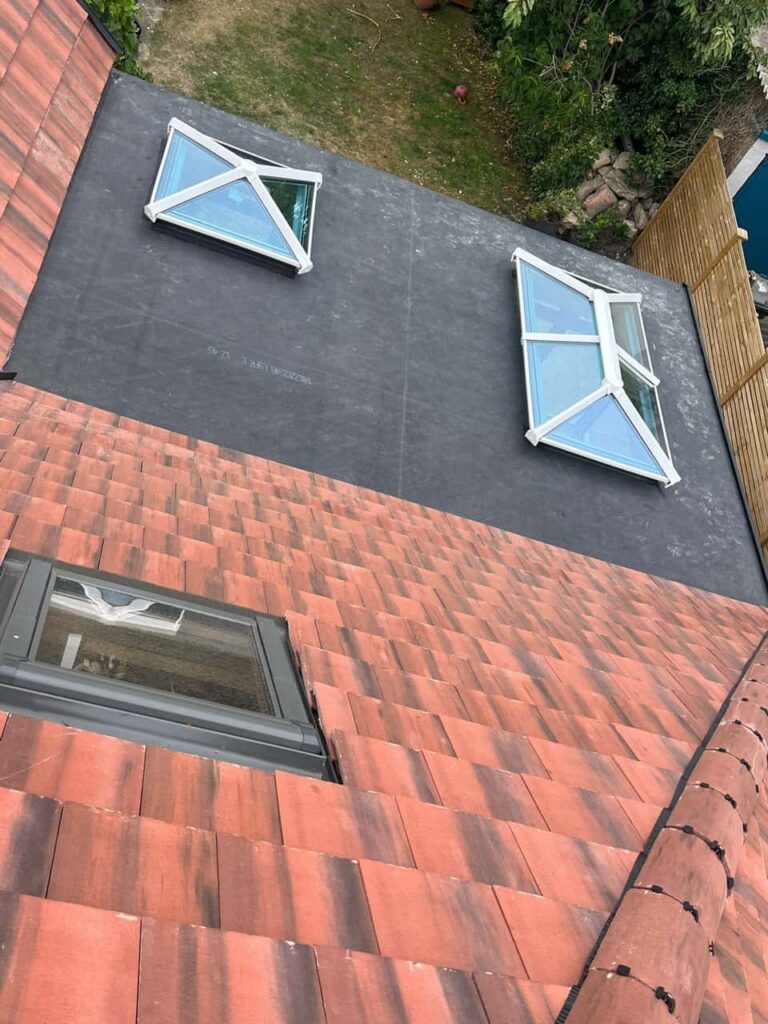Pitched roofs are a timeless and practical feature of many homes across the UK. Their angled structure allows for effective water runoff, improved durability, and visual appeal. However, no roof is immune to wear and tear. Over time, even the best-built pitched roofs can experience problems that require professional attention. At Chichester Roofing Repairs, we specialise in identifying and fixing these issues promptly for homeowners throughout Chichester, West Sussex.
Below are the five most common problems we see with pitched roofs — and how to spot them early.
1. Slipped or Broken Roof Tiles
One of the most frequent issues affecting pitched roofs is displaced or damaged tiles. High winds, heavy rain, frost and age-related deterioration can all cause tiles to move out of position or crack.
Why this matters:
- Gaps in tiling allow water to seep through
- Exposed underlay can quickly degrade
- Increases risk of internal leaks and damp
Signs to look for:
- Visible gaps or uneven tiles from ground level
- Debris or tile fragments in gutters or on the ground
- Damp patches in the loft or ceiling below
At Chichester Roofing Repairs, we replace damaged tiles with care and precision to restore full protection.
2. Damaged or Deteriorated Flashing
Lead flashing seals the junctions where your roof meets chimneys, walls, or skylights. When flashing is cracked, corroded or lifting, it can compromise the watertight seal of your roof.
Risks of damaged flashing:
- Leaks around roof penetrations
- Water stains on walls and ceilings
- Rust marks or cracks in leadwork
If you suspect flashing failure, professional repair is essential to stop further moisture ingress and structural damage.
3. Blocked or Failing Valleys
Roof valleys are the internal angles formed where two roof slopes meet. These areas channel water into the guttering system but can become blocked with debris or suffer from corrosion and wear over time.
Problems caused by failing valleys:
- Water pooling on the roof surface
- Accelerated tile deterioration in adjacent areas
- Leaks into loft spaces or upstairs rooms
Keeping valleys clear and properly sealed is vital for the overall health of your pitched roof.
4. Sagging or Uneven Rooflines
A pitched roof should follow a consistent, symmetrical slope. Sagging in one section could indicate underlying problems with the roof structure, such as decayed rafters or overloaded battens.
Common causes of sagging:
- Prolonged water ingress weakening timber supports
- Excess weight from wet insulation or moss buildup
- Poor construction or age-related weakening
This is a structural concern that should be inspected urgently by experienced roofers like Chichester Roofing Repairs.
5. Gutter and Fascia Damage
Though not part of the pitched surface itself, the guttering and fascia play a critical supporting role. When these components are blocked, loose or cracked, they can allow water to run down walls and soak into brickwork or timber.
Warning signs include:
- Overflowing gutters during rainfall
- Rotten or warped fascia boards
- Mould or staining on external walls
We carry out full roofline inspections and repairs to ensure your drainage system works efficiently.
Conclusion
Your pitched roof is a major protective element of your home — but it needs regular care to stay in good condition. By recognising the early signs of these five common issues, you can prevent minor problems from turning into major repairs.
If you live in Chichester, West Sussex and have noticed signs of roof trouble, contact Chichester Roofing Repairs. Our expert team is here to assess the condition of your pitched roof and carry out timely, high-quality repairs that keep your home protected year-round.
Call us on: 01243 957 294
Click here to find out more about Chichester Roofing Repairs
Click here to complete our contact form and see how we can help with your Roofing needs.

